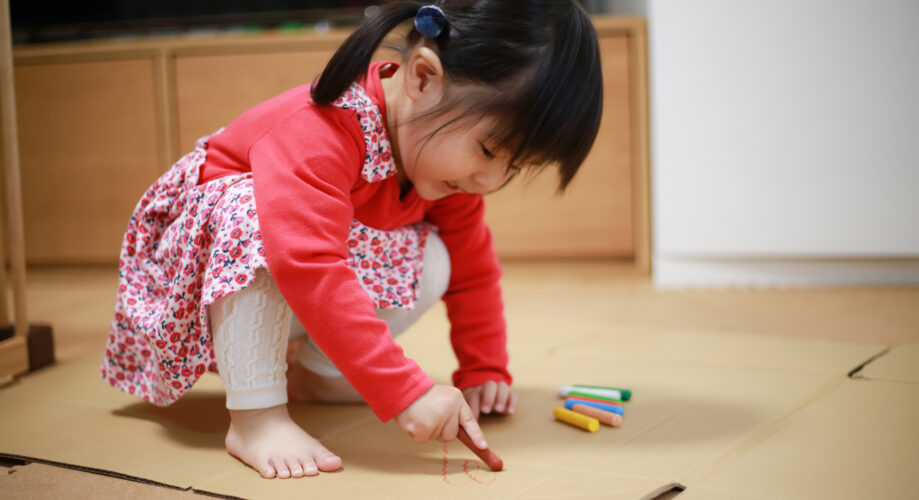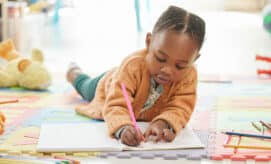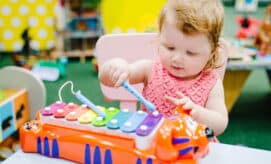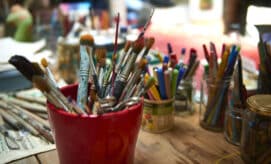Open-ended process art projects offer young children rich opportunities for learning and skill-building. Process art activities are open-ended and child-led, with no end product or set of step-by-step instructions for children to follow. This encourages early learners to be creative, explore materials, experiment with techniques, and express themselves freely. In addition to fostering creative self-expression, process art activities engage fine motor skills, and can even incorporate movement and gross motor skills for little ones who are particularly active or wiggly!
In this article, you’ll find process art ideas that encourage creativity, fine motor skill development, and gross motor skill engagement.
Integrating Motor Skill Development into Process Art Projects
There are many ways to organize and offer art activities in our early learning programs. Open-ended process art projects make it possible for children to express themselves creatively, explore new art materials, practice fine motor skills, and stay physically active! Below are some strategies for turning art time into an activity that supports fine and gross motor skill development.
Strategies for Incorporating Fine Motor Skills
Fine motor skill development refers to building and strengthening the small groups of muscles in fingers and hands that help little ones with self-care activities like washing hands, holding a utensil, and buttoning clothing. Fine motor skills are also foundational academically, since they support a child’s ability to write with a pencil in kindergarten and elementary school. Educators can incorporate fine motor skill-building into creative art projects by encouraging young children to try the following activities:
- Using scissors to cut paper
- Squeezing a glue bottle or do-a-dot paints
- Holding paint brushes
- Molding modeling clay
- Peeling and placing stickers or washi tape
- Working with ink stamps
Strategies for Incorporating Gross Motor Skills
Gross motor skill development refers to building and strengthening large groups of muscles in the arms, legs, and torso to support walking, running, jumping, and more. These skills are crucial for mobility, independence, and overall health. Educators can encourage movement and incorporate gross motor skill-building into process art activities with the following strategies:
- Spreading large sheets of paper or cardboard on a table or floor so that children can stretch to reach for materials and move around the expansive canvas
- Hanging large sheets of paper on the wall and encouraging the children to use all of the paper by bending down, stretching up high, and stepping to the side
- Taking chairs away from the art table so that children have the option to stand, reach, and move around as they make their art
- Taking the art materials outside
Process Art Activities that Engage Motor Skills








